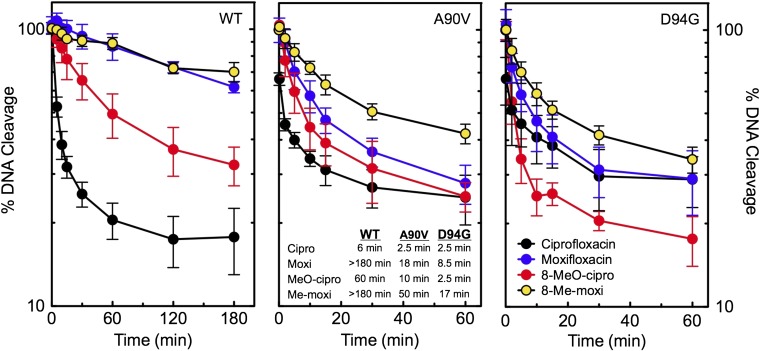Fig. 8.
Effects of fluoroquinolones on the persistence of cleavage complexes formed by WT and mutant M. tuberculosis gyrase. The stability of ternary enzyme–drug–DNA cleavage complexes formed with WT (Left), GyrAA90V (A90V, Middle), and GyrAD94G (D94G, Right) was determined in the presence of 100 µM ciprofloxacin (Cipro, black), 50 µM moxifloxacin (Moxi, blue), 50 µM 8-methoxy-cipro (red), or 10 µM 8-methyl-moxi (yellow). The data table (Inset, Middle) lists the t1/2 of DNA cleavage complexes formed with each drug–enzyme combination. Initial DNA cleavage-religation reactions were allowed to come to equilibrium and were then diluted 20-fold with reaction buffer. Levels of DNA cleavage at time 0 were set to 100%. Error bars represent the SD of at least three independent experiments.

